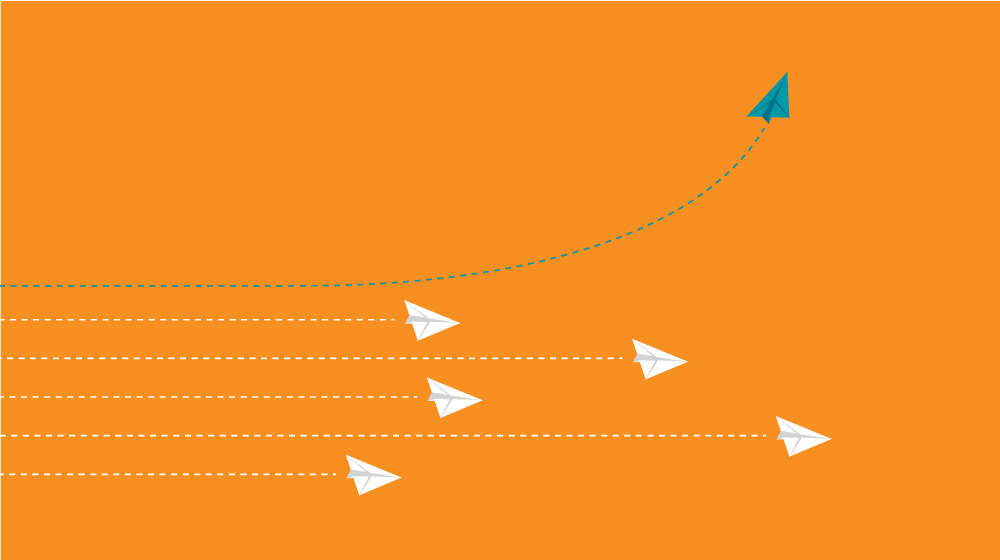One of my clients is a retired surgeon who I’ve been working with since 2005.
I’ve been by his side through the financial crisis, Brexit, the pandemic and now we’re facing new challenges thanks to the energy crisis, war in Ukraine and rising cost of living.
Despite several economic, political and social challenges, my client has managed to build a considerable amount of wealth over the last 17 years.
This wealth has provided him with freedom and flexibility.
He’s enjoying a comfortable retirement, although he still does some work. And he’s able to support his family in ways many parents could only dream of.
He’s on track to achieving all the lifelong goals he set out when we began working together.
Just one thing stands in his way: the constant desire to chase the next big thing.
The fear of missing out
My client has always had an active interest in finance and alongside working with me, he runs his own separate trading portfolio.
Some of the short-term investments he’s made have performed well.
Others have resulted in losses. Some complete losses. Three of his investment ideas turned out to be national headline grabbing scams, years later.
At one stage, he fell victim to a scam and lost a moderate amount of money. He chose not to discuss the investment with me. “I knew you’d say it was a bad idea and I wanted to do it anyway,” was his response.
Meanwhile, ticking over quietly in the background has been the ISA that I’ve managed.
Using low-cost tracker funds, his annualised ISA return has been around 7% each year. That’s after all the fees.
On the face of it, the ISA might seem uninspiring. You won’t become a millionaire overnight thanks to a stocks and shares ISA. But a tax-free millionaire he is.
But when clients read success stories from Tesla millionaires who bought shares for $25 each in 2013, they starting thinking: “What if I can find the next big thing? Maybe that’s my shortcut?”
Stellar investments look obvious in hindsight. But as we know, what you’re really looking at is a series of EuroMillions tickets. And you only have a 1 in 139,838,160 chance of winning the top prize.
So what can we do?
I always approach each investment idea with an open mind and explain that it’s about thinking with your head, rather than your heart. This inevitably means that I’m going to recommend a less exciting approach. But I tell them it works. Keep it simple.
I also tell clients that there’s always someone waiting in the wings to sell you something new. It doesn’t matter whether it’s cryptocurrency and NFTs, reality TV stars or Elon Musk, for thousands of years, people have tried to sell things to one another.
But the worst part is that buying the thing doesn’t make the pressure go away. There’s always a fresher, more exciting version around the corner. It doesn’t just apply to finance:
"Thanks for booking your flight with us. Would you like to skip the queues, increase your leg room, or add champagne?"
"Here's your new car. I'll be back in three years to sell you a new one."
If you’re financially comfortable, it can be tempting to say ‘yes’ to everything.
What’s the goal? Be honest
If people are honest with themselves, for all the new-age hype, cryptocurrency was never about helping the world’s poor. It was about making people richer than they already were. Be honest, if that’s the goal.
But as we know, with our clients the goal lies elsewhere.
With my surgeon client, the plan was to achieve a fair return for a given level of risk. He wanted me to help him make his hard-earned income grow at a greater rate than inflation. He told me he wanted to live a happy life and care for those around him.
Do cryptocurrencies and NFTs fall in line with this plan? I’m not so sure.
That’s why I like to remind him: “This is working. It continues to work. It's been working for decades now. Let’s resist the temptation to change it in some way because it's in our nature to tinker. If it ain’t broke…"
This is counterintuitive to most other walks of life
This desire to meddle, to tweak, and see if you can improve the status quo is admired in almost all other cases. Every sportsperson is looking for the extra 1%. Every good business owner wants to try to do things differently – they look for innovation, alternatives that will deliver better efficiency. But with investing, this approach goes against the grain.
With investing, maxims and metrics that work in other areas of our life fail us as investors. When you look at a 17-year-old portfolio, you can see the benefits of sticking with tried and tested – it’s damn hard not to get in the way of inevitable wealth if we just sit on those hands.
But doing nothing isn’t easy.
